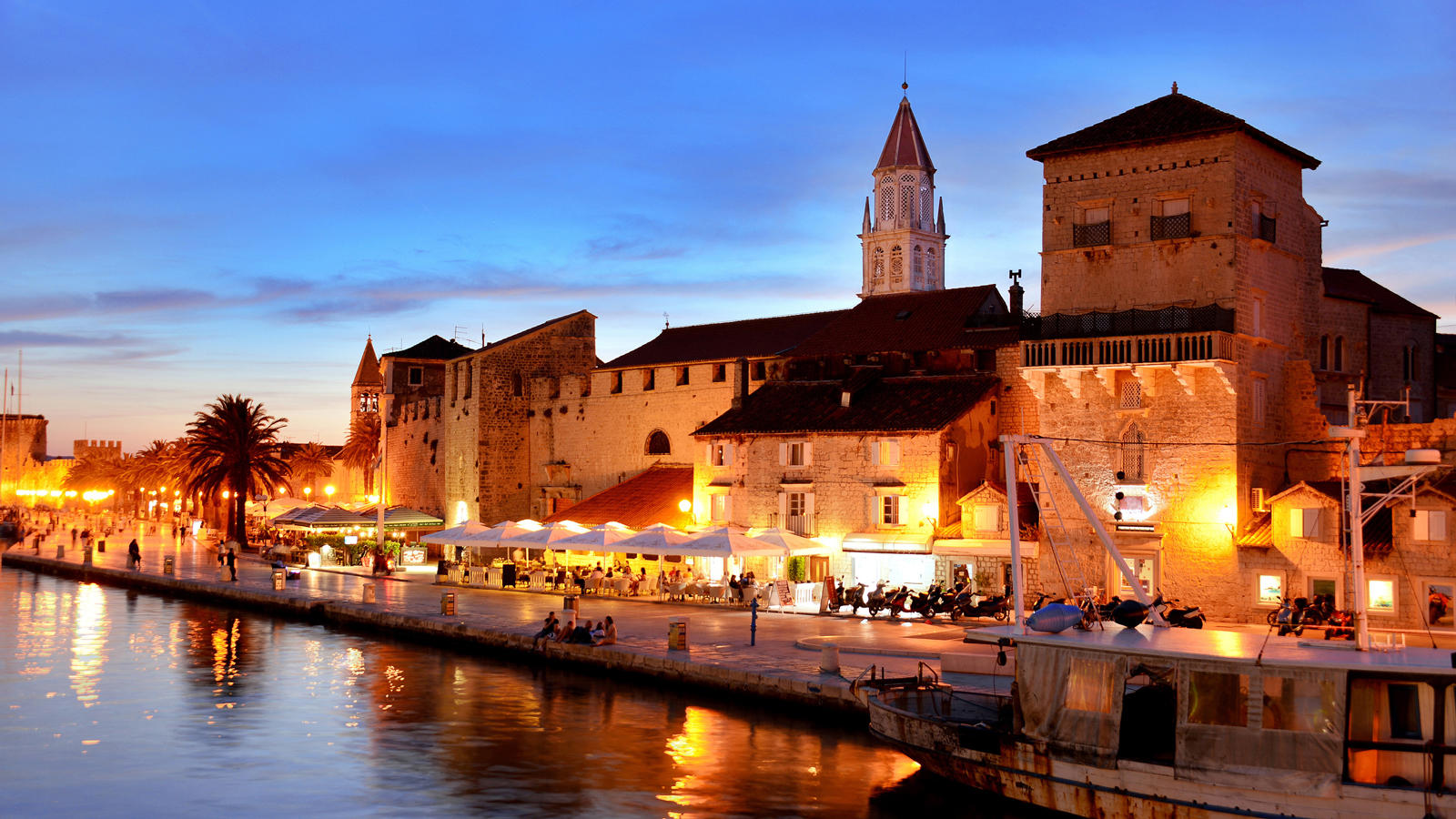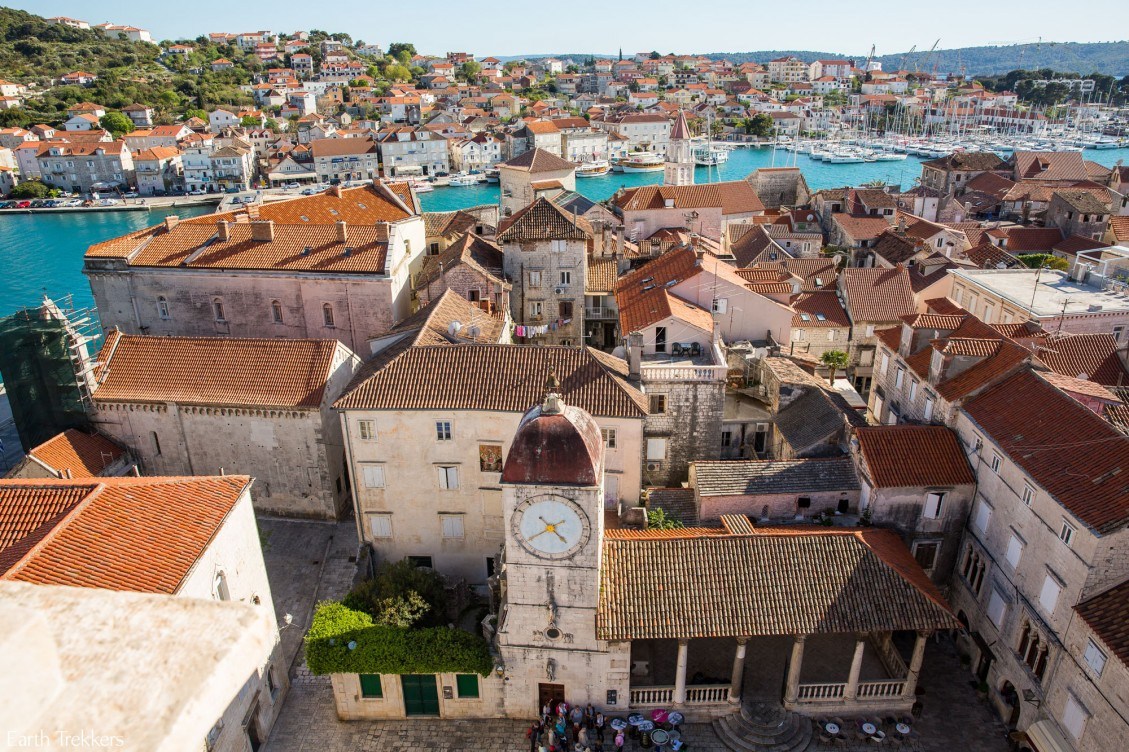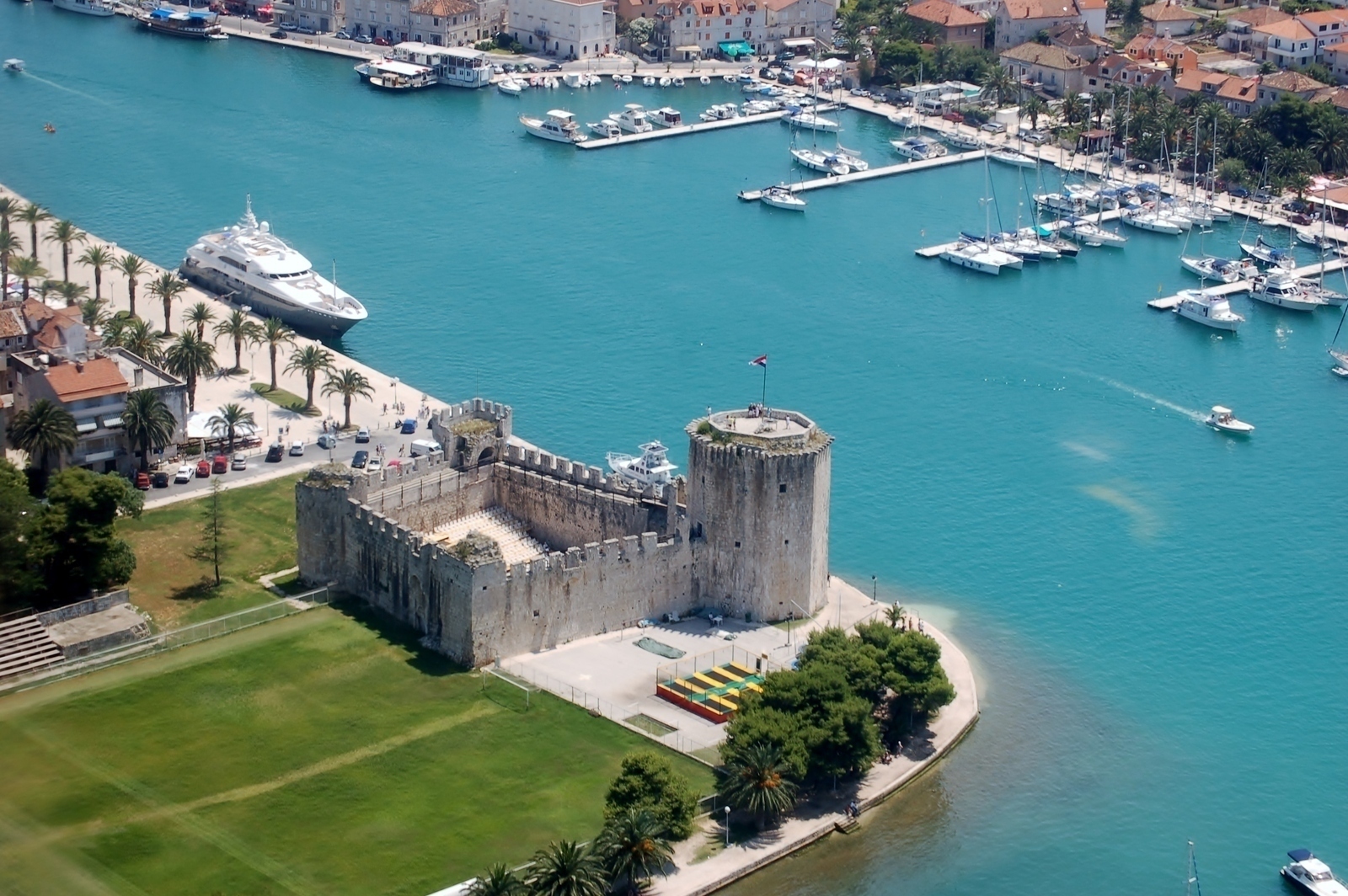
TROGIR
rogir has a 2300 years of continuous urban tradition. Its culture was created under the influence of the ancient Greeks, and then the Romans, and Venetians. Trogir has a high concentration of palaces, churches, and towers, as well as a fortress on a small island, and in 1997 was inscribed in the UNESCO World Heritage List. "The orthogonal street plan of this island settlement dates back to the Hellenistic period and it was embellished by successive rulers with many fine public and domestic buildings and fortifications. Its beautiful Romanesque churches are complemented by the outstanding Renaissance and Baroque buildings from the Venetian period", says UNESCO report.
Trogir is the best-preserved Romanesque-Gothic complex not only in the Adriatic, but in all of Central Europe. Trogir's medieval core, surrounded by walls, comprises a preserved castle and tower and a series of dwellings and palaces from the Romanesque, Gothic, Renaissance and Baroque periods. Trogir's grandest building is the church of St. Lawrence, whose main west portal is a masterpiece by Radovan, and the most significant work of the Romanesque-Gothic style in Croatia.
The most important sites include:
- Historical city core, with about 10 churches and numerous buildings from 13th century
- The city gate (17th century) and city walls (15th century)
- The Fortress Kamerlengo (15th century)
- The Duke's Palace (13th century)
- The Cathedral (13th century) with the Portal of Master Radovan, the unique work of this Croatian artist
- The big and small palaces Cipiko from the 15th century
- The city loggia from 15th century


